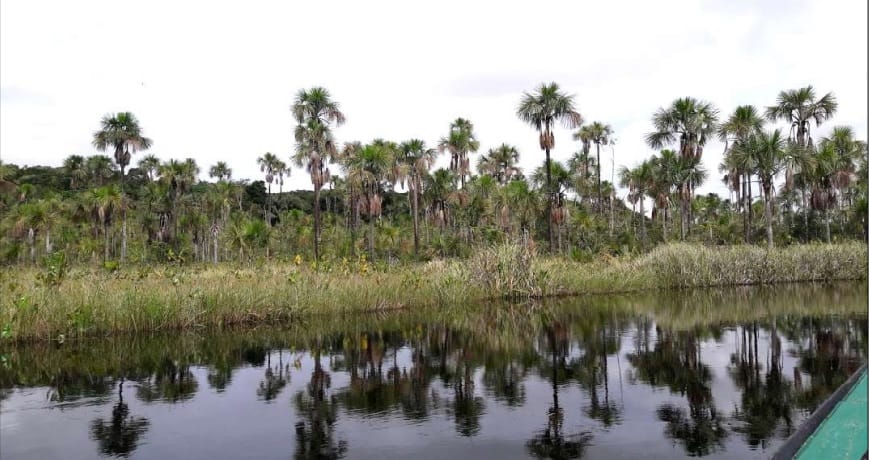Yes, it can. Even though Ité palm, otherwise known as the ‘tree of life’, is exclusively found in the southern hemisphere, recent studies have indicated that their ecosystems are extremely productive.
Dr Linton Arneaud, an Environment Consultant from Trinidad and Tobago believes that Ité palm (Mauritia flexuosa) ecosystems are capable of reducing the impacts of greenhouse gases at the regional level.
According to an article in the Brazilian Journal of Biology, the tree of life may be at risk due to Guyana’s oil boom, and ecological managers and policy-makers should be aware of the importance of these ecosystems and their contribution to climate change mitigation.

How does the ‘tree of life’ slow down global warming?
According to Dr Arneaud: “these ecological systems do this by storing thousands of tons of carbon belowground within their waterlogged environs, in the form of peat deposits”. He explained that atmospheric carbon is absorbed by trees via photosynthesis, when the trees die, the carbon accumulates in the waterlogged conditions preventing decomposition and the release of carbon back into the air.
Why is Ité referred to as the tree of life?
Dr Arneaud not only refers to Ité as the tree of life, but also as a hyperkeystone species—this is because the tree provides essential food, shelter, and habitat for many organisms. Moreover, Ité is important to many indigenous communities as it has an incredibly wide range of uses – from food products like juice, candies and flour, to building resources such as thatch (tibisiri), planks and windbreaks, as well as medicines, jewellery, ceremonial objects and handbags. For a deeper look into the history and botany of this species, check out this article by Dr Arneaud, “The ‘Tree of LIfe’ Grows In Trinidad – Have You Heard of It?”
What can be done to preserve the tree of life?
In relation to the future of Ité ecosystems in Guyana, Dr Arneaud fears “Guyana may be at risk of prioritizing short-term monetary gain over development that is environmentally sustainable”. He hopes that the government takes measures to ensure that ongoing economic development/activities resulting from the oil boom are performed in an environmentally sustainable way. Activities that destroy Ité habitats; such as agriculture, urban development and industrial expansion must be closely monitored by the Environmental Protection Agency (EPA) in order to preserve these unique and extremely productive environments





